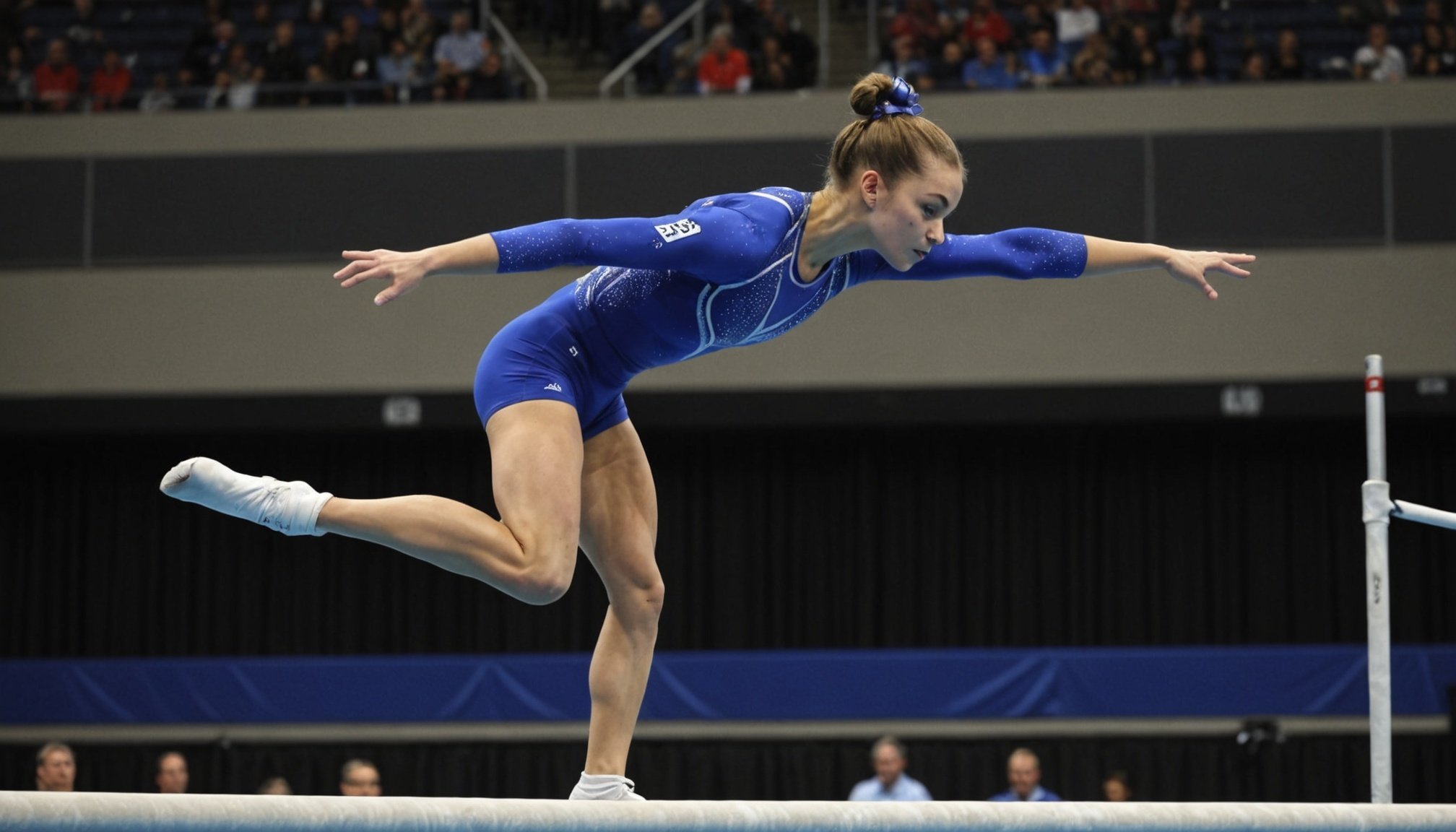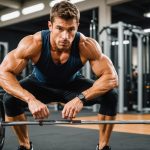Unlocking Superior Flexibility: Top Strategies for Enhancing Mobility in Gymnasts
Understanding the Importance of Flexibility in Gymnastics
Flexibility is a cornerstone of gymnastics, enabling athletes to perform complex movements with precision and grace. It is not just about touching your toes or doing a split; it’s about having the range of motion and muscle elasticity to execute routines flawlessly and prevent injuries. For gymnasts, flexibility is crucial for achieving optimal performance and maintaining long-term health.
Gymnasts often develop hypermobility through consistent practice of activities that demand high levels of flexibility, such as dance, diving, or gymnastics itself. However, this hypermobility must be balanced with strength and stability to avoid injuries[1].
Also to read : Mastering Carbohydrate Strategies: A Cyclist”s Guide to Peak Performance Nutrition
Building a Comprehensive Flexibility Program
A well-rounded flexibility program for gymnasts should include a variety of exercises and training methods. Here are some key components to consider:
Static Stretching
Static stretching involves holding a stretch for a period of time to lengthen the muscle. This is particularly effective after a workout when the muscles are warm. For example, hamstring stretches and hip flexor stretches are essential for gymnasts to improve their range of motion.
Have you seen this : Maximizing Off-Season Success: Essential Training Adjustments for Tennis Players
Dynamic Stretching
Dynamic stretching prepares the muscles for physical activity by mimicking the movements of the sport. Examples include leg swings, arm circles, and hip rotations. These stretches help increase blood flow and reduce the risk of injury during training[5].
Yoga and Holistic Gymnastics
Yoga and holistic gymnastics can significantly enhance flexibility by combining physical postures, breathing techniques, and meditation. These practices improve muscle elasticity, balance, and core stability. For instance, yoga on a chair can be particularly beneficial for gymnasts, as it offers a gentle yet effective way to improve flexibility and balance, especially for those who may have mobility limitations[2][4].
Incorporating Strength Training for Enhanced Mobility
Strength and flexibility are interdependent; strong muscles support flexible joints and vice versa. Here’s how strength training can be integrated into a gymnast’s routine:
Core Stability
A strong core is the foundation of good mobility. Exercises like planks, side planks, and Russian twists help stabilize the core, which in turn enhances overall flexibility and movement.
Upper Body Strength
Upper body strength is crucial for gymnasts, particularly for movements involving the gymnastic rings or performing muscle ups and pull ups. Incorporating exercises like push-ups, pull-ups, and rows can help build the necessary strength.
Lower Body Strength
Lower body strength is equally important, especially for movements that require stability and power, such as landings and takeoffs. Squats, lunges, and deadlifts are essential for building strong legs and hips.
Table: Comparing Different Flexibility and Strength Training Methods
| Training Method | Benefits | Examples of Exercises | Best For |
|---|---|---|---|
| Static Stretching | Increases range of motion, reduces muscle soreness | Hamstring stretch, hip flexor stretch | Post-workout, injury prevention |
| Dynamic Stretching | Prepares muscles for activity, improves blood flow | Leg swings, arm circles, hip rotations | Pre-workout, warm-up |
| Yoga | Enhances flexibility, balance, and core stability | Downward-facing dog, warrior pose, chair yoga | General flexibility, balance, and relaxation |
| Core Stability Training | Improves overall stability and flexibility | Planks, side planks, Russian twists | Core strength and stability |
| Upper Body Strength Training | Builds strength for upper body movements | Push-ups, pull-ups, rows | Gymnastic rings, muscle ups, pull ups |
| Lower Body Strength Training | Builds strength for lower body movements | Squats, lunges, deadlifts | Landings, takeoffs, overall lower body strength |
Practical Tips for Gymnasts to Enhance Flexibility
Here are some practical tips that gymnasts can incorporate into their daily routine to enhance flexibility:
- Regular Practice: Consistency is key. Make flexibility exercises a regular part of your training program.
- Example: Allocate 10-15 minutes each day for stretching and flexibility exercises.
- Listen to Your Body: Respect your body’s limits and avoid pushing too hard, which can lead to injury.
- Example: If you feel pain during a stretch, stop immediately and consult a coach or healthcare professional.
- Use Proper Technique: Ensure you are performing stretches and strength exercises with proper form to avoid injury and maximize benefits.
- Example: Use a mirror or work with a coach to ensure your form is correct during exercises like squats and deadlifts.
- Incorporate Active Recovery: Active recovery techniques like foam rolling and self-myofascial release can help maintain muscle health and flexibility.
- Example: Use a foam roller after workouts to help reduce muscle tension and improve recovery.
Injury Prevention Through Enhanced Mobility
Enhanced mobility not only improves performance but also plays a critical role in injury prevention. Here’s how:
Reducing Muscle Imbalances
Muscle imbalances can lead to poor movement patterns and increased risk of injury. Ensuring that all muscle groups are equally strong and flexible helps maintain proper alignment and movement.
Improving Joint Stability
Strong and flexible joints are less prone to injuries. Exercises that focus on core stability and strength around the joints (like the hip and shoulder) are particularly beneficial.
Enhancing Movement Quality
Good mobility allows for better movement quality, reducing the risk of overuse injuries. For example, a gymnast with good hip mobility is less likely to suffer from knee injuries due to poor landing techniques.
Quotes from Experts
- “Flexibility is not just about touching your toes; it’s about having the range of motion and muscle elasticity to execute routines flawlessly and prevent injuries.” – Gymnastics Coach
- “Yoga and holistic gymnastics can significantly enhance flexibility by combining physical postures, breathing techniques, and meditation.” – Yoga Instructor
- “A strong core is the foundation of good mobility. It stabilizes the body and enhances overall flexibility and movement.” – Strength and Conditioning Coach
Achieving superior flexibility is a multifaceted process that involves a combination of static and dynamic stretching, strength training, and holistic practices like yoga. By understanding the importance of flexibility, building a comprehensive training program, and incorporating practical tips, gymnasts can enhance their mobility, improve performance, and prevent injuries. Remember, flexibility is a journey that requires consistent effort and attention to detail, but the rewards are well worth it.
Detailed Bullet Point List: Daily Flexibility Routine for Gymnasts
- Warm-Up (10 minutes)
- Light cardio such as jogging or jumping jacks
- Dynamic stretching including leg swings, arm circles, and hip rotations
- Static Stretching (15 minutes)
- Hamstring stretch: Stand with your feet shoulder-width apart, then bend forward at the hips to touch your toes.
- Hip flexor stretch: Kneel on one knee with the other foot in front of you, then lean forward to stretch the front of your hip.
- Quad stretch: Stand with one hand against a wall for balance, lift one leg behind you, and grab your ankle with your hand.
- Chest stretch: Stand in a doorway with your hands on the doorframe at shoulder height, then lean forward to stretch your chest.
- Yoga or Holistic Gymnastics (20 minutes)
- Downward-facing dog: Start on all fours, then lift your hips up and back, straightening your arms and legs.
- Warrior pose: Stand with your feet wide apart, turn one foot slightly inward, and bend your front knee.
- Chair yoga: Use a chair for support while performing various yoga poses.
- Cool Down and Active Recovery (10 minutes)
- Foam rolling or self-myofascial release to reduce muscle tension
- Gentle stretching to relax the muscles after the workout
By following this daily routine, gymnasts can maintain and enhance their flexibility, ensuring they are always ready to perform at their best.











